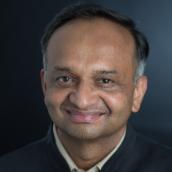What funders need to know: Technical Support Units for better health – the dos and don’ts
Has the role of a Technical Support Unit evolved from its original intent? How can they best support governments to achieve targeted outcomes? Our experts draw on over a decade of experience to discuss the issues.
-
Date
August 2022
-
Area of expertiseHealth
-
KeywordsHealth service organisation and delivery (HSOD) , HIV/AIDS
More than a hundred years ago, German sociologist Max Weber argued that a bureaucracy provided an organisation with specialised expertise, certainty, continuity, and unity of purpose. However, he warned that this could go both ways with people trapped in rigid rules and powerplay. Technical Support Units (TSU) bring in similar attributes – both the promise and the dangers.
Technical support units aim to bolster public health standards and administration of state governments. Health is a state subject in India. In 2010, the Bill & Melinda Gates Foundation pioneered the Health TSU concept with the objective of accelerating state-wide improvement in maternal, new-born and child health in Bihar.
The ‘doer’ paradox:
TSUs are expected to work with governments to facilitate development. In reality, TSUs often do the work of the government and end up replacing or substituting them. This happens because being the ‘doer’ is easier than getting the work done by facilitating government bureaucracy. This pathway leads to the production of quick and tangible results that are visible. The commonest requests from the TSUs by governments, are usually more funds and more people to run the administrative errands. Power-play and hierarchies stem challenges to the status quo, which TSUs and technical advisors are hired to disrupt. When a TSU accepts these ‘wants’ as its own agenda, it ends up mimicking the government, even in its limitations and failings.
Both parties benefit from this: the government can afford to do little and get the accolades while the TSU is allowed to luxuriate in the feeling of having ‘done something’ useful the government could not do. Some of them grow power ‘horns’ disproportionate to their abilities, due to their proximity to policymakers. Referring to the axes of research-policy-practice-implementation, we informally asked some TSU staff where they thought they were functioning. We thought it was intriguing that most of them said they were ‘implementers’ (doers). When reminded that only a government had the power to implement (programmes), they reluctantly agreed.
Funders can ensure that the TSU maintains the balance of over-promising results and accepting non-technical jobs to build trust quickly, versus pushing back and risking the trust in the government relationship.
The ‘vision’ paradox:
The TSU is impossibly tasked to design activities with a mix of long-term and short-term visions such that all stakeholders find purpose in them. On the one hand, short-term goals are often more immediately visible and favoured by governments, but the impact is transitory. On the other, long-term goals are slow and thereby relatively invisible, but bring forth long-lasting change. With governments focusing on their five-year terms, and TSUs leveraging their alliance with the powers-that-be, triaging long-term versus short-term goals becomes a tricky affair. In practice, staffers at the TSU and within the government commit to goals based on the political priorities of those at the helm of power.
TSUs are mostly funded by private funders and face a crucial dilemma: they have to face accusations of pushing elitist/donor agendas or merge their agenda with the government’s and end up becoming an avatar of the state. Another paradox embedded in this premise is that the funders assume that the government is a homogeneous entity – with a monolithic voice and want. In reality, governments, made of politically invested individuals and bureaucrats, rarely have consensus on what they want. Bureaucrats on their part, are often a floating cadre themselves, and are, all too often, abruptly replaced with no succession planning, impacting programs.
The ‘dos’ for the funding agencies are primarily building institutional memory and tracking the progress on the shared ‘Theory of change’, co-developed with the health department. The TSU is best suited to identify the poor ‘components’ in good policies, policy-making, implementation and the pay-offs.
Funders do well by insisting on clear measurable definitions, though it may seem like ‘bean-counting’. Without metrics any effort can be labelled as effective/ineffective or meaningful/cosmetic, as per convenience. With clarity on the nature of the targeted outcome (unity of purpose), TSU staff avoid fixing what is immediate and remaining in the ‘project mode’. The natural consequences of ‘Performing out’ by government staff and the TSU are avoided.
Conclusion
The TSU (and its funder/s) will need to constantly check-in on their ‘facilitation role’ in providing expertise, certainty, continuity, and unity of purpose, while being careful of adding another layer of bureaucracy and mimicry. Careful delineation of the strengths and potential weaknesses of each partner, TSU, and government staff can help achieve this and reinvoke Weber.
About the authors:
Rajni Luthra is Senior Programme Manager at Oxford Policy Management.
Nobhojit Roy was South East Asia Health Lead at Oxford Policy Management and is currently with the WHO Headquarters in Geneva at the Clinical Services & Systems unit.


